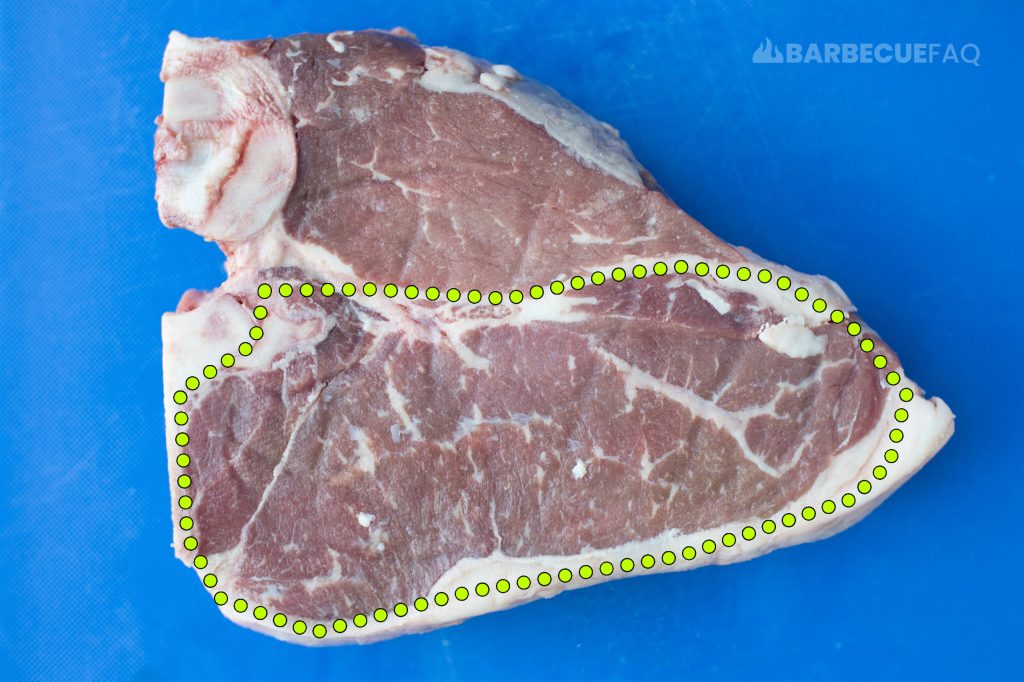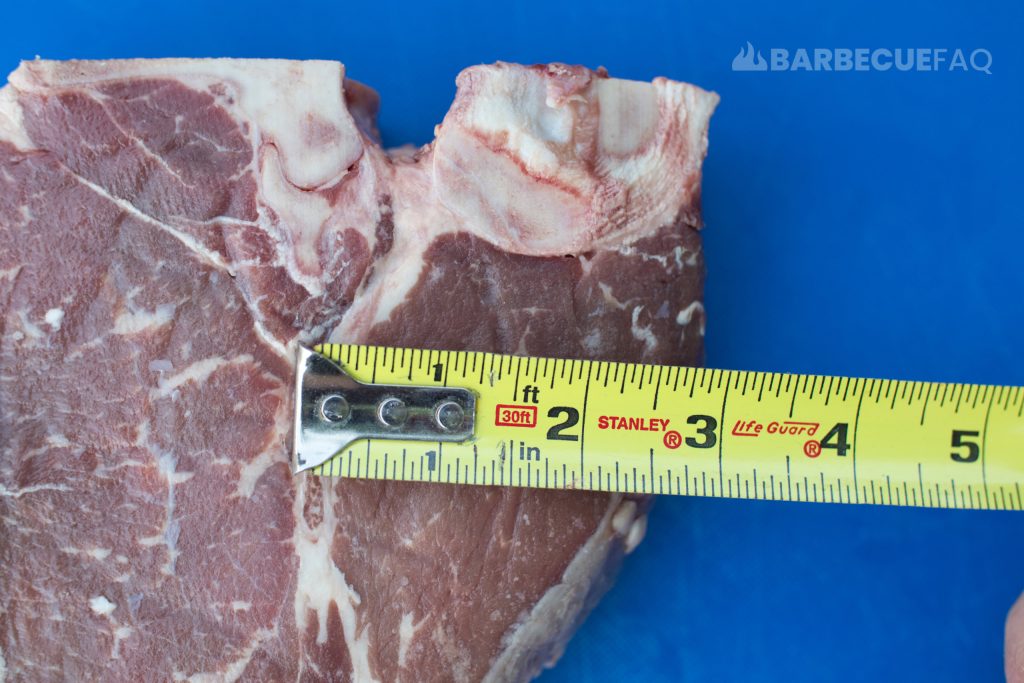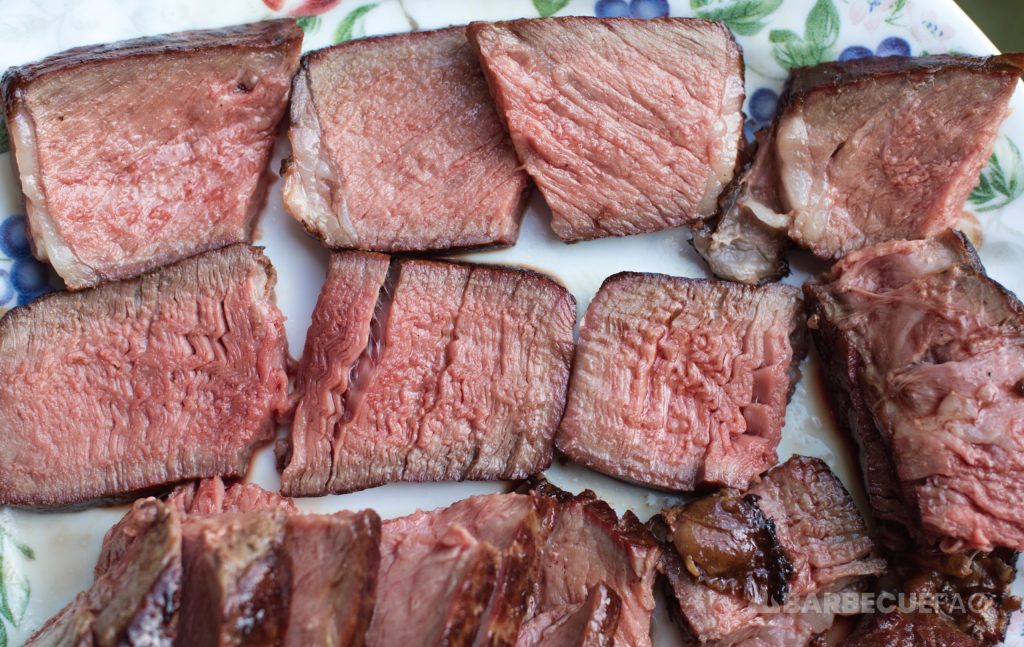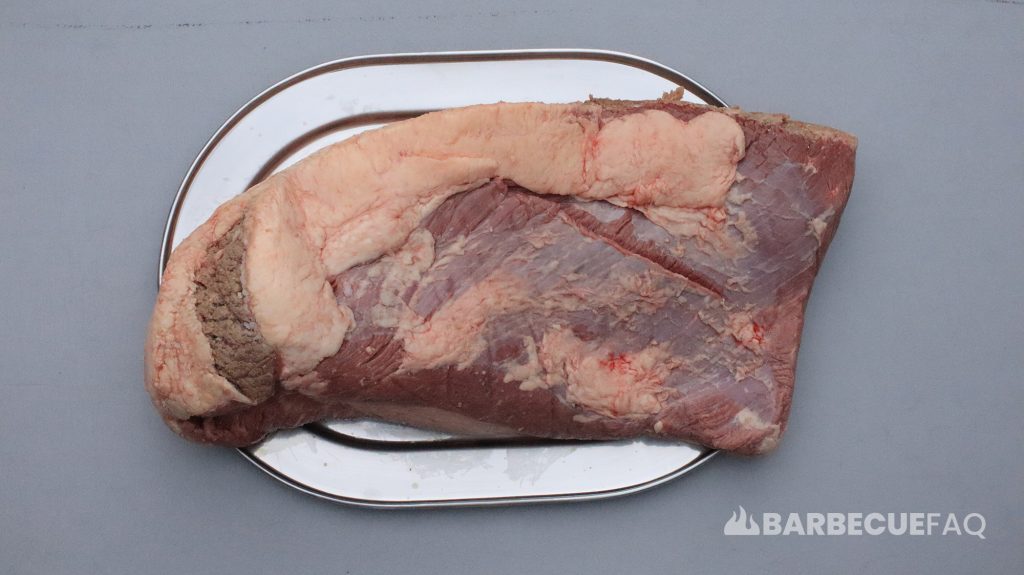The Porterhouse steak is found in the loin primal of the cow.
Specifically from the posterior end of the short loin primal (towards the sirloin):

The porterhouse must come from this end because the tenderloin is larger towards the posterior of the animal.
What Muscles Comprise the Porterhouse Steak?
The Porterhouse steak is primarily:
- Longissimus dorsi – strip loin (the same as a NY Strip)
- Psoas muscles – tenderloin
The “strip loin” side is to the bottom in dotted yellow:

The “tenderloin” side is to the top, in dotted yellow:

The porterhouse does contain part of the gluteus medius muscle (which is the main muscle of the top sirloin).
A Porterhouse Must Have a Tenderloin that is At Least 1.25″ in Width
This isn’t just a made up number either, it’s a requirement by the USDA.
To understand what that “measurement” means, here’s a picture:

So we’re essentially measuring from the “T-bone” across the tenderloin muscle.
If the tenderloin muscle is less than 1.25″, it has to be sold as a t-bone steak.

So all Porterhouse steaks are t-bones, but not all t-bones are Porterhouse steaks.
Why Does the Width of the Tenderloin Muscle Matter?
It’s all about money.
Since the tenderloin muscle is prized, a Butcher wants to maximize their profits by doing 1 of 3 things:
- Completely remove the tenderloin.
- Cut into both t-bone and porterhouse steaks.
- Thin cut t-bone steaks.
To prove we can look at pricing on Wild Fork Foods (updated 9/12/2024):
| Cut of Meat | Price/lb | Estimated Cost |
|---|---|---|
| T-Bone Steak | $11.98/lb | $22.16 |
| Tenderloin (steaks) | $19.98/lb | $17.48 |
| Tenderloin (whole) | $15.98/lb | $93.48 |
| NY Strip | $10.98/lb | $15.37 |
| Porterhouse | $12.98/lb | $32.45 |
NY strip is the cheapest since it was separated from the tenderloin.
The tenderloin is the most desirable and has the greatest price per lb.
T-bone and porterhouse steaks are more money than just an NY strip because it has part of the tenderloin.
Porterhouse “Steak” is Better Cooked as a Roast and then Seared (OR Reversed)
Either way has a slow cook process involved.
This is because Porterhouse is usually cut:
- 2-3 inches thick
- Weighing 2-3 lbs
Meaning, these “steaks” would more appropriately be called “roasts.”
Often, the goal with a roast is to achieve “wall-to-wall” finishing temperatures – typically medium-rare or medium – across the entire finished slice.





